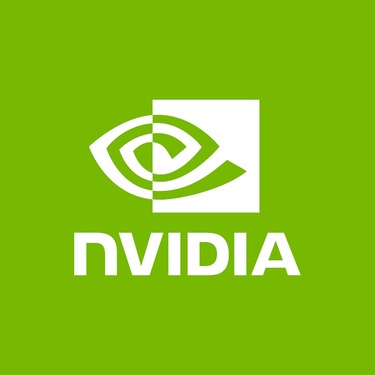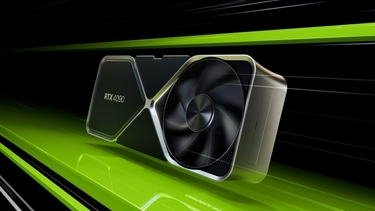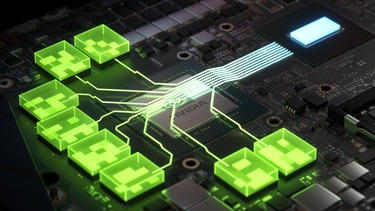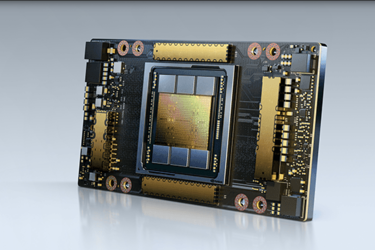Nvidia stands as a beacon of technological innovation, redefining industries with its cutting-edge advancements. Renowned globally for its GPUs, the company has transcended its gaming origins to dominate markets like artificial intelligence, autonomous vehicles, and cloud computing.

Since its founding in 1993, Nvidia has consistently redefined itself, venturing into domains like gaming, artificial intelligence (AI), data centers, autonomous vehicles, and the metaverse. Now a trillion-dollar enterprise, Nvidia’s meteoric rise reflects its adaptability and foresight, with revenue skyrocketing from $4 billion in 2013 to over $27 billion in 2023. Its influence continues to shape the future of technology.
Here is the inspiring story of Nvidia and its meteoric growth over the last decade:
Founding Years- The Birth of GPU Innovation
Nvidia was founded in 1993 by Jensen Huang, Chris Malachowsky, and Curtis Priem with a mission to create cutting-edge graphics accelerators. Their pioneering efforts culminated in the release of the GeForce 256 in 1999, celebrated as the world’s first GPU (graphics processing unit). This innovation transformed the gaming industry and established Nvidia as a dominant force in graphics technology.
Early 2000s- Laying the Foundations for Growth
As Nvidia solidified its leadership in gaming, the company identified new opportunities for GPUs beyond graphics. The release of CUDA in 2006 enabled GPUs to be programmed for parallel processing tasks, unlocking applications in fields like scientific research, financial modeling, and high-performance computing.
Simultaneously, Nvidia explored the automotive sector, providing the foundation for its later ventures into advanced driver-assistance systems (ADAS) and autonomous vehicles.

A Decade of Transformative Growth
Gaming as a Catalyst
Throughout the 2010s, Nvidia retained its dominance in gaming. GPUs such as the GeForce RTX series introduced groundbreaking features like Ray Tracing and DLSS (Deep Learning Super Sampling), elevating the gaming experience to new heights. Popular titles like Call of Duty and Far Cry flourished on Nvidia hardware, reinforcing its status as a gaming powerhouse.
The Cryptocurrency Boom
The rise of cryptocurrencies like Bitcoin and Ethereum in the mid-2010s created an unexpected surge in demand for Nvidia GPUs, which were well-suited for cryptocurrency mining due to their ability to perform complex computations efficiently.
During the 2017 cryptocurrency boom, Nvidia saw GPU sales soar, with miners purchasing graphics cards in bulk. While this spike contributed significantly to the company’s revenue, it also led to fluctuations in demand, as seen during the crypto crash in 2018. Nvidia swiftly adapted, diversifying its focus toward AI and data center markets to offset the volatility of cryptocurrency-driven sales.

Dominance in AI
Nvidia’s pivot to artificial intelligence was a turning point. By leveraging the parallel processing capabilities of its GPUs, Nvidia became indispensable to AI research and development. Its CUDA platform allowed developers to train complex AI models, placing Nvidia at the core of AI innovations, including OpenAI’s GPT models.
The launch of the Volta architecture in 2017, featuring the Tesla V100 GPU, established Nvidia as the gold standard for AI hardware. This breakthrough fueled exponential growth in sectors ranging from healthcare to autonomous systems.
Expansion into Data Centers
The rise of big data and cloud computing propelled Nvidia’s growth further. Companies like Amazon, Google, and Microsoft integrated Nvidia GPUs into their data centers to meet the increasing demand for machine learning and data analytics. The acquisition of Mellanox Technologies in 2020 for $6.9 billion strengthened Nvidia’s position in networking and high-performance computing.
Driving Innovation in Autonomous Vehicles
Nvidia’s DRIVE platform revolutionized the automotive industry by providing carmakers with AI-powered solutions for self-driving technology. Partnerships with leading automakers such as Mercedes-Benz and Toyota underscored Nvidia’s commitment to redefining mobility.
Beyond vehicles, Nvidia extended its focus to robotics, drones, and smart cities, showcasing its ambition to lead the transformation of transportation and urban infrastructure.

Exploring the Metaverse
The growing interest in virtual worlds inspired Nvidia’s Omniverse, a platform that allows developers and creators to design and simulate virtual environments. Omniverse has become a cornerstone for industries ranging from architecture to entertainment, positioning Nvidia as a key enabler of the metaverse.
Financial Milestones and Market Leadership
Nvidia’s financial success mirrors its technological achievements. In 2013, the company reported $4 billion in revenue. By 2023, this figure had skyrocketed to over $27 billion, with Nvidia’s market capitalization often exceeding $1 trillion.
The cryptocurrency boom and the subsequent growth of AI applications played a significant role in this financial trajectory. Nvidia’s ability to adapt to fluctuating markets—shifting from crypto-driven demand to AI and data centers—highlighted its resilience and strategic foresight.

Challenges and Future Prospects
While Nvidia’s achievements are impressive, challenges remain. The company faces fierce competition from AMD, Intel, and emerging players in AI hardware. Geopolitical tensions and supply chain vulnerabilities also pose risks.
Yet, Nvidia’s focus on innovation continues to position it as a leader in emerging technologies. With advancements in generative AI, quantum computing, and edge computing, Nvidia is poised to shape the next wave of technological transformation.
Summary
Nvidia’s journey is a masterclass in reinvention and vision. From dominating gaming to pioneering AI and reshaping industries like autonomous vehicles and the metaverse, Nvidia has consistently pushed the boundaries of technology.
As it embarks on new frontiers, Nvidia remains an inspiring example of how adaptability and foresight can drive long-term success, ensuring its legacy as one of the most transformative companies in modern history.
References:
1. How Nvidia became a trillion-dollar company
2. The Brief Story of NVIDIA: From Silicon Dreams to Global Domination
3. Nvidia history and timeline: From GPU maker to AI leader




